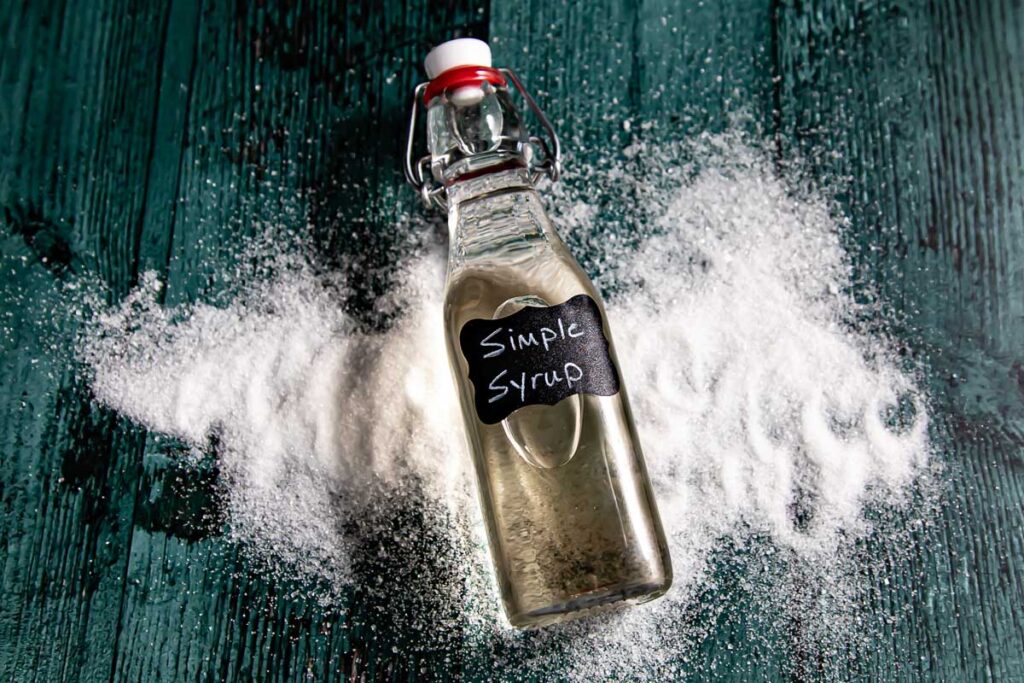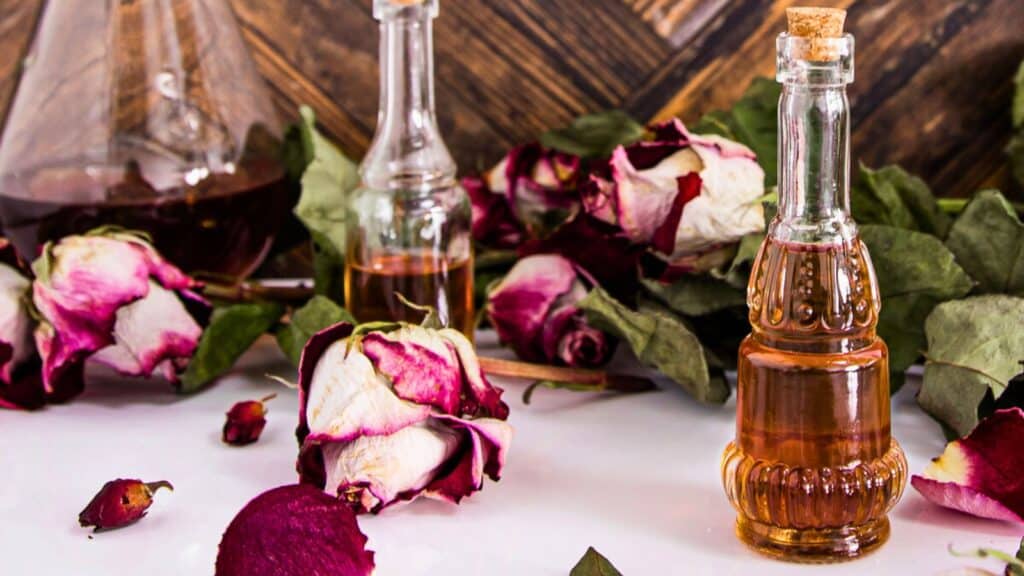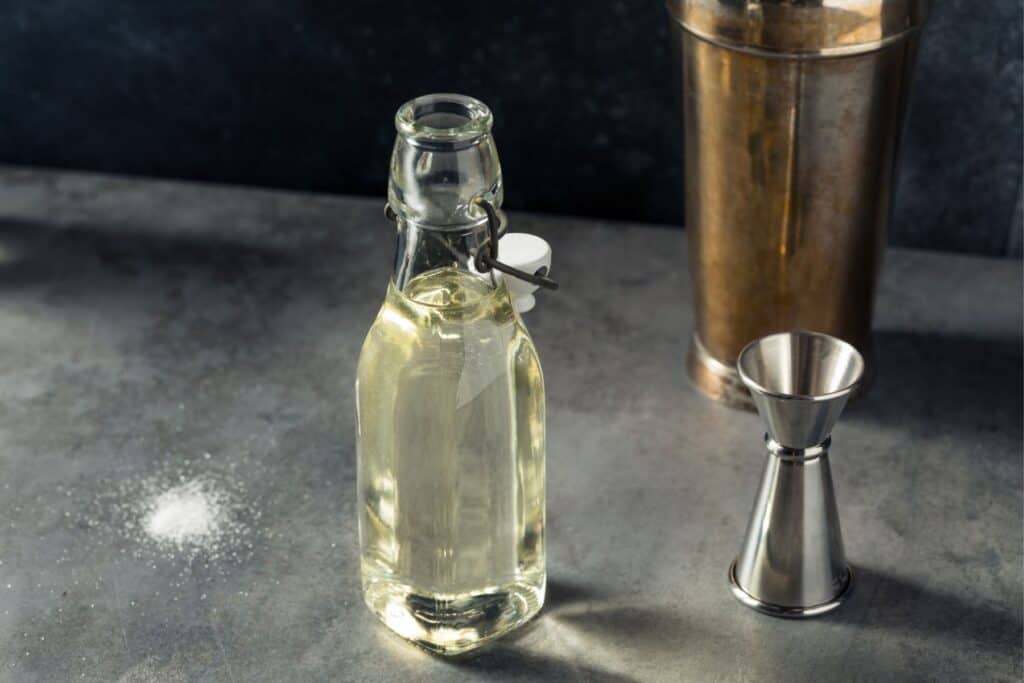If you ever had a cocktail recipe that calls for simple syrup, did you wonder if homemade simple syrup goes bad? How long does it last? Read on to learn more about the sweet and sour of simple syrup and whether it can go bad.

Simple syrup is a staple ingredient in many cocktails and non-alcoholic beverages, providing sweetness and balance to drinks. It’s easy to make at home by dissolving sugar in water, but questions about its shelf life and storage often arise.
Proper storage is key to extending the lifespan of simple syrup. Explore the factors that affect its longevity, signs of spoilage and best practices for storage. Discover different types of simple syrup and their varying shelf lives.
What is simple syrup?
A basic simple syrup consists of one part sugar and one part water. It’s easy and fast to make at home, but you can also buy it at most stores. The ratio of sugar to water varies depending on the desired thickness and added ingredients, but typically, it’s equal parts sugar and water.
The purpose of making simple syrup is to dissolve the granulated sugar into liquid form so that it can easily be added to drinks. Making your own at home allows you to customize your syrup any way you’d like.
How to make simple syrup
To make simple syrup, add 1 cup of sugar and 1 cup of water to a small saucepan. Boil over medium heat until the sugar is dissolved. Cool to room temperature, then pour into an airtight storage container. This is also called hot-process simple syrup.
A cold-process sugar syrup is adding sugar to a liquid, usually water, and stirring occasionally until the sugar dissolves in roughly 10-15 minutes. This cold-processed simple syrup is good for making a small batch, as cold-processed syrup tends to have a shorter shelf life than hot-processed, homemade syrup. You can also adjust the amount of sugar for an extra-sweet syrup.
Does simple syrup go bad?

The short answer is yes. As with any other food item, if not stored properly, simple syrup will eventually spoil due to the growth of bacteria or mold. However, if stored correctly in an airtight container with the lid on in a cool, dry place away from direct sunlight, your homemade or store-bought rich simple syrup should last for several months without any issues.
The good news is that unopened simple syrup can last up to 12 months when stored properly in a cool, dry place away from direct sunlight. For optimal freshness, an opened bottle should be refrigerated and used within one to six months. However, storing your open bottle properly in an airtight container can also last up to 12 months.
How to know if simple syrup is bad?
If you’ve noticed that your simple syrup doesn’t quite look the same, you’re likely questioning if it’s still good to use or not. The simple syrup should be clear.
There are a few signs that your simple syrup has gone bad. These include a cloudy appearance, the development of mold or black dots floating on top of the syrup and a smelly odor due to bacterial growth. Typically, if you’re going to question if it’s good or not, then simply not use it.
What is the shelf life of simple syrup and how long does simple syrup last?

People erroneously assume that simple syrup can last forever, but that’s far from the truth. Because it’s high in sugar, simple syrup is the perfect breeding ground for bacteria, so you want to pay attention to how long you store simple syrup.
Store-bought syrups
If stored properly in a cool, dark place such as the fridge or a pantry, the store-bought simple syrup has a longer shelf life of up to six months, this is likely due to added preservatives. Obviously keeping the syrup beyond the expiration date calls for double-checking if it’s still good or not.
Unopened simple syrup
Unopened store-bought simple syrup could be stored for a long time at room temperature in a pantry, you could even freeze it for longer. Once it’s opened, best to store it in the refrigerator for up to six months.
Homemade simple syrup
A hot-processed simple syrup of just sugar and water should last up to a month if stored properly. This is the easiest type of simple syrup to keep in your fridge.
Infused simple syrup
Adding herbs, spices or fruits to your simple syrup will greatly reduce its shelf life. Those added fresh ingredients will start to break down. Properly stored and infused simple syrup will last for one to two weeks.
How should you store simple syrup?

To yield the best results, store your simple syrup in a sterile container with a tight seal in the refrigerator. You can sterilize your glass container by submerging it in boiling water and either air drying or drying it in an oven. You can also use glass jars or bottles with a flip top or a mason jar.
Can you freeze simple syrup?
Yes, especially if you can’t use your homemade simple syrups in a timely fashion. Place them in an airtight container and store them in the freezer. You can also use ice cube trays. This way, you just pop an ice cube whenever you need to add some simple syrup to your drink.
Where can you use simple syrup?
While any type of simple syrup can be used in mocktails or cocktails, there are lots of different ways to utilize this delicious ingredient. Use it in iced coffees or coffee-based mocktails and cocktails, like a frozen mudslide mocktail. It’s also fantastic in iced tea or iced tea-based drinks like butterfly pea flower tea mocktail.
Storing simple syrup in the fridge will help keep your drinks cold, but adding flavored syrup to hot drinks also works. You can try simple syrup in tea, coffee or even a hot toddy.
Sweet on more more info about simple syrup?
Want to experiment with different types of sweeteners in your mocktails? Try maple syrup, agave or others. There are plenty of common alternatives and substitutes when running low on simple syrup. Once you start playing with this unique staple, you’ll find a million uses and even other flavors to complement it.
Ksenia Prints is a food writer, blogger, photographer and recipe developer from Montreal, Canada. She blogs at My Mocktail Forest, a blog focused on fun, flirty non-alcoholic drinks and recipes for entertaining.
This article originally appeared on My Mocktail Forest.